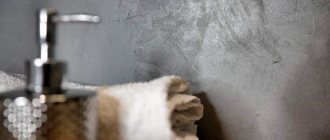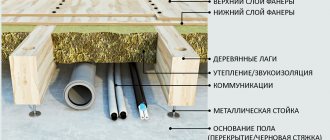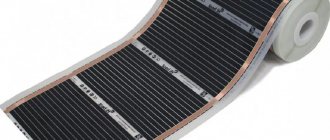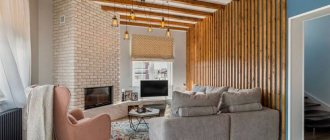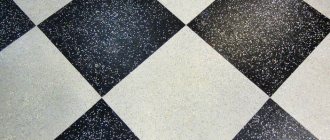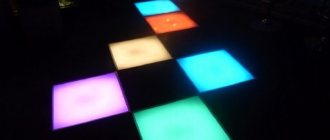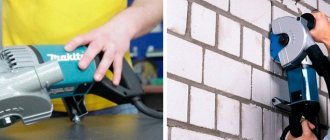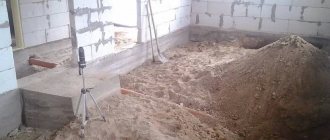Decorative floors are a unique group of floors. When we write about them, it seems as if we have described the types of paints for painting on canvas, because it is the skill, knowledge and experience of the artisan artist that creates such a material. And you will learn about what kind of image and what material you can get from this article!
Damian Kozlowski, owner of a construction company specializing in the creation of these amazing coatings, showed us the world of decorative flooring. Thank you!
Decorative floors or what?
Left: microcement, resin flooring and concrete flooring
The name decorative flooring refers to several materials where the common denominator is a unique pattern that is handcrafted on site.
This type of flooring can be made from a variety of materials, but in this article we will focus on four of them:
- Made from epoxy resin
- Made from polyurethane resin
- Concrete floors
- Microcement floors
As always, the difference lies in the details, the amount of work required to achieve the desired effect, and the price of materials. Therefore, we will discuss each of them in turn.
Conclusion
It’s possible to make your floor unique without using expensive finishing materials. Use white cement, colored filler, choose a color, lay out a pattern of pebbles or colored glass, write an inscription or draw a pattern with a contrasting topping - there are a lot of options. Even simply sanded, polished and polymer-coated concrete will surpass standard tiles in terms of decorativeness and will cost much less. And in the case of underfloor heating systems, heat loss will also be reduced. If you expand your horizons, concrete with this treatment can be used not only on the floor, but also as wall decoration, to create countertops or fireplace portals - whatever you like.
The subtleties of creating a concrete floor on the ground are in the article about the types of floors. From the article on how to save on building materials, you can find out what else you can really profit from without harming quality. In a video about building a house from aerated concrete, a portal participant shares his own experience in optimizing costs.
Decorative epoxy resin flooring
Resin flooring can be a uniform color or be stained to varying degrees with other colors to form a specific pattern.
Epoxy resin flooring is the most popular type of decorative flooring. However, due to their widespread use and variety of performance techniques, they are often greatly underappreciated and, due to their apparent ease of implementation, mistakenly considered too simple and cheap.
In theory, a can of resin is enough, but in practice you need much more to enjoy the most durable type of resin floor.
Epoxy floors allow for many color options. From floors of the same color to floors with "veins", colorful decorations, a metallic effect or even designs embedded in it, or even objects such as coins.
Properties of epoxy resin
Epoxy resin is the hardest material in the resin flooring group.
Also, like any polymer floor, it is a waterproof material , so you can safely use it in the bathroom and kitchen.
The epoxy resin itself has a natural glossy finish, but you can optionally coat it with varnish.
You can immerse in resin, plastic particles or anything else
The natural shine of the material in most areas can wear off over time, i.e. the shine in this place will be less.
Decorative polyurethane resin flooring
Polyurethane resin floor
The main difference between polyurethane and epoxy resin will be its hardness. Floors made of polyurethane resin are noticeably softer and more precise, they are elastic.
Due to its elasticity, unless you scratch the floor too much, those scratches can "seal" themselves, and the soft floor is very pleasant on bare feet.
Of course, there are many more differences, and these have to do with resistance to chemicals or very low temperatures. However, for home use they are not important.
Colors of polyurethane floors
You can choose any color
Floors of this type can be painted in any color from the RAL palette . You can also apply additional visual effects, but this will be on the surface of our floor. This allows you to create a textured floor using plastic particles scattered by hand on the floor.
Polyurethane resin flooring has superior UV resistance, making it perfect even in a very sunny living room, and you don't have to worry about discolouration.
Pouring materials
The possibility of leveling the floor is not limited to concrete mortar. You can purchase dry construction mixtures or mix cement mortar. In addition, there is a wide range of self-leveling mixtures. Therefore, it is important not only to understand the pouring technology, but also to choose the right material.
Let's compare the capabilities of different compositions:
| Type of solution | pros | Minuses |
| Concrete |
|
|
| Cement-sand mixture |
|
|
| Dry construction mixture |
|
|
| Self-leveling floor |
|
|
Packages with ready-made dry mixtures always contain detailed instructions for application. CPS (cement-sand mixture) can be prepared independently by mixing M500 cement and sifted fine river sand in a 1:3 ratio.
The proportions of the concrete solution depend on what kind of screed is poured. The most interesting in this series are self-leveling floors. A little more about them.
Concrete floors
Expansion joints in concrete are visible lines.
For some it is a disadvantage, for others it is an excellent decoration - for concrete it is simply a technical requirement. Its popularity is growing, especially in the styles of minimalism, loft and modern.
Concrete floors can be made by pouring or putty and can be up to 30mm thick, but in practice no more than 10mm is used.
The color of a concrete floor depends on its manufacturer, while the final sample is given by the contractor.
It is worth remembering that concrete requires the use of expansion joints, that is, small gaps between large areas. There is also a peculiarity of the material, because without expansion joints, concrete can crack. However, expansion joints are designed to beautify our floor.
Terrazzo concrete floor (terazzo)
Once the floor is made , it must be securely fixed and then we give it a final gloss or matte finish.
Photo in the interior of a country house
The interior of a country house has more opportunities for realizing ideas. A simple fireplace with a concrete cladding will look gorgeous. The contrast of cold and hot will look impressive in the interior of the living room.
The photo shows a living room in the interior of a country house. The niche, finished with concrete panels, is fully utilized, combining a fireplace, a seating area and a place for logs.
With the help of concrete columns or small partitions, you can divide the space into zones without compromising the area, without interfering with natural light.
A minimalist staircase with railings is suitable for both classic and modern interiors.
Microcement floors
Microcement floor
Unlike concrete floors, microcement floors are thinner and are applied by pouring. The thinner thickness makes it more resistant to microcracks and can be used on walls and stairs.
Due to their low thickness, microcement floors can be produced on much larger surfaces without expansion joints.
The thickness of the applied layer is only 2-3 mm. However, remember that the small thickness of the floor requires a well-prepared base . That's why we again emphasize the importance of choosing professionals who will take care of this.
Due to their low thickness, microcement floors can be produced on much larger surfaces without expansion joints. Thanks to this, you get the effect of a uniform surface throughout the entire interior.
Microcement floors have a more uniform appearance and due to their thickness, additional elements cannot be built into them.
Purpose of different grades of concrete
Experts say that each brand of concrete has its own primary area of application.
- M100 - used for preparatory work, for example, for concrete footings.
- M150 - also used in the preparatory process. This brand is suitable for the manufacture of paths, house blinds and floor screeds. — M200 – used for making platforms and sidewalk paths on the street.
- M250 - used in the construction of multi-storey buildings for the manufacture of flights of stairs and small elements of load-bearing structures.
- M300 – Based on this concrete, supporting structures are made in multi-story construction.
- M400, M450 and M500 - are used for the manufacture of objects of increased reliability. Such as subway tunnels, bunkers, bridges and so on.
- M600 - This concrete is used for the construction of high-strength structures, for example, dams, dams or underground structures.
Decorative floor care
All types of decorative floors are covered with a protective layer. Even an epoxy resin floor, which does not require additional varnish, is itself a kind of protective layer (epoxy resins are part of the epoxy varnish).
Caring for this floor is similar to caring for a wooden floor. In both cases, you can wash off the protective layer using household chemicals.
Therefore, it is worth paying special attention to care products and using those that are designed for your specific floor. By taking the appropriate measures, your floor will maintain its ideal appearance for many years.
Repair and renovation
If your floor loses its luster after a few years, whether from normal use or unwanted scratches, you can refresh it.
Depending on the degree of wear, the floor can be repainted or only the damaged surface can be sanded or a new coat applied.
Thanks to this, the decorative floor can be updated endlessly.
Texture
Rough
Grains of sand and small pebbles are clearly visible in the rough texture. Visually, the surface is matte, similar to velvet. In terms of tactile sensations, it is a hard, rough surface.
The photo shows a minimalist bedroom. Concrete walls have a rough texture.
Smooth
To give the surface a more finished look, several technologies are used.
- Polished concrete has a reflective surface in which all grains of sand and pebbles are visible. The mirror effect is achieved by mechanical grinding of the surface. For a stronger effect, the surface is polished.
- Varnished. A more cost-effective way to treat concrete surfaces. The surface becomes shiny and bright.
Price for decorative floors
Concrete and Micro Cement Floors
As you may have noticed, the quality of the floor is mainly affected by the skill of the contractor and the materials used. This leads to the fact that the price difference in the market is so large.
An additional difficulty in estimating the cost of implementation is the fact that the substrate must be prepared very carefully before the actual work begins.
The prices therefore provide an estimate for a really good standard of comprehensive services together with proper sub-base preparation.
Average total cost of manufacturing a decorative floor, taking into account preparation:
— Epoxy resin about 2,600 rubles / m²
– Polyurethane resin about 4,400 rbl/m²
— Concrete floors about 3,500 rubles / m²
— Microcement floors about 3,000 rubles / m²
Remember we are talking about full service prices, not a can of resin and labor.
Therefore, the above prices are indicative and, as always, everything should be discussed first in order to prepare a specific and reliable cost estimate.
Conclusion
It’s possible to make your floor unique without using expensive finishing materials. Use white cement, colored filler, choose a color, lay out a pattern of pebbles or colored glass, write an inscription or draw a pattern with a contrasting topping - there are a lot of options. Even simply sanded, polished and polymer-coated concrete will surpass standard tiles in terms of decorativeness and will cost much less. And in the case of underfloor heating systems, heat loss will also be reduced. If you expand your horizons, concrete with this treatment can be used not only on the floor, but also as wall decoration, to create countertops or fireplace portals - whatever you like.
The subtleties of creating a concrete floor on the ground are in the article about the types of floors. From the article on how to save on building materials, you can find out what else you can really profit from without harming quality. In a video about building a house from aerated concrete, a portal participant shares his own experience in optimizing costs.
Decorative floors - a unique solution for exceptional interiors
We rarely think of specialists as finishing artists when decorating interiors. However, in the case of decorative floors, it is the aesthetic element that makes us choose them.
However, the appearance of the finished floor is influenced more by the skill and experience of the contractor than by the material itself .
Therefore, writing about decorative floors is like writing about paints for painting on canvas. Of course, their type affects the final effect, but it is the artist's hand that creates the image.
That's why the price difference is so big.
Decor and accessories
Concrete or plaster decorative elements will be an interesting addition to the interior. These can be floor or tabletop potted vases, unusual flower vases, decorative items, book holders or massive candlesticks.
